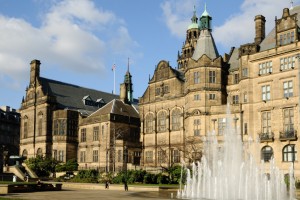 Nowadays, many employees consider that the office is something like a second home. Throughout their working lives, average office employees in the United Kingdom will spend more than 99,000 hours at the workplace, and the figures can quickly add up once you start taking into account overtime.
Nowadays, many employees consider that the office is something like a second home. Throughout their working lives, average office employees in the United Kingdom will spend more than 99,000 hours at the workplace, and the figures can quickly add up once you start taking into account overtime.
In view of the above, it only makes sense that caring office managers and others in managerial positions may want to ensure that their office environment is as comfortable and inspiring as it can be. Although some may see this as a costly and unnecessary investment, the truth is that a little effort will go a long way in terms of boosting staff morale and improving productivity levels in the office. As research has shown, making the office more comfortable is not just a matter of improving its appearance, but also an effective way of creating a positive and healthy working environment. In this post we have listed some effective measures that you can implement in the office to achieve this beneficial goal.
Invest in good-quality ergonomic office furniture
If you are going to spend a quarter of your day sitting at a desk, you may as well do it comfortably. Don’t limit yourself to chairs though, as today there are many different types of ergonomic furniture available that can make a big difference to the comfort levels of your office. Consider things like adjustable height desks, monitor arms, keyboard trays, mouse platforms, or even kneeling chairs. The benefits will surprise you, as they include everything from improved mental function to a reduced risk of developing chronic injuries, such as carpal tunnel syndrome.
Improve the lighting fixtures
The human body reacts very strongly to lighting conditions, and in fact, our body clocks are mostly dictated by how much or how little light we are exposed to. Poor or inadequate lighting in an office environment is one of the major causes of migraines and decreased productivity. Similarly, continued exposure to fluorescent lighting can trigger anxiety and depressed moods.


 An office relocation is something that many business owners have to consider at some point, whether they are in the process of expanding the company or moving to a new area. The complexity and risks associated with an office move should not be underestimated. Changing offices can be as stressful and delicate as going through a merger or appointing a new CEO. Yet, there is no reason to be alarmed, as there are various things you can do to ensure that your office move is successful. Below you will find some sound advice on how to make the transition as smooth as possible.
An office relocation is something that many business owners have to consider at some point, whether they are in the process of expanding the company or moving to a new area. The complexity and risks associated with an office move should not be underestimated. Changing offices can be as stressful and delicate as going through a merger or appointing a new CEO. Yet, there is no reason to be alarmed, as there are various things you can do to ensure that your office move is successful. Below you will find some sound advice on how to make the transition as smooth as possible. In the increasingly globalised world we live in, it has become common for professionals to relocate to a new city in search of better career opportunities. There are many factors that need to be considered when choosing a new home base, but over the years, a number of UK cities have profiled themselves as the best destinations for working professionals. Career opportunities and good quality of life are no longer centralised in or around London, so take a look at our list of the top British cities to live and work in and at everything they have to offer.
In the increasingly globalised world we live in, it has become common for professionals to relocate to a new city in search of better career opportunities. There are many factors that need to be considered when choosing a new home base, but over the years, a number of UK cities have profiled themselves as the best destinations for working professionals. Career opportunities and good quality of life are no longer centralised in or around London, so take a look at our list of the top British cities to live and work in and at everything they have to offer. A Look at Glasgow’s Changing Demographic Profile
A Look at Glasgow’s Changing Demographic Profile  Serviced offices can help businesses thrive, especially smaller businesses that have limited finances and want a cost-effective and professional space to operate. Whether as a temporary space or for longer-term use, serviced office spaces are often attractive to start-up and newer businesses, especially smaller businesses. The following outlines a few of the benefits that serviced office accommodation can offer businesses.
Serviced offices can help businesses thrive, especially smaller businesses that have limited finances and want a cost-effective and professional space to operate. Whether as a temporary space or for longer-term use, serviced office spaces are often attractive to start-up and newer businesses, especially smaller businesses. The following outlines a few of the benefits that serviced office accommodation can offer businesses. In recent years cities across the UK have undergone many changes in quick succession. After the struggles of the 2008 financial crisis causing much hardship across the country, the economies of UK cities have started to grow and in some cases flourish once again. While in many cities here is still a long way to go to get back to pre-2008 levels, there are many signs of optimism and economic recovery.
In recent years cities across the UK have undergone many changes in quick succession. After the struggles of the 2008 financial crisis causing much hardship across the country, the economies of UK cities have started to grow and in some cases flourish once again. While in many cities here is still a long way to go to get back to pre-2008 levels, there are many signs of optimism and economic recovery. Giving notice of a meeting can have several effects. Staff might believe it is an important meeting, a progress meeting, or a meeting where “we are all going to get tasked with extra work”. Effective meetings achieve outcomes. When a meeting inspires each attendee to complete tasks, the meeting is successful. To chair an effective meeting, be aware of several common factors that make meetings more dynamic and fluid.
Giving notice of a meeting can have several effects. Staff might believe it is an important meeting, a progress meeting, or a meeting where “we are all going to get tasked with extra work”. Effective meetings achieve outcomes. When a meeting inspires each attendee to complete tasks, the meeting is successful. To chair an effective meeting, be aware of several common factors that make meetings more dynamic and fluid. Situated in East Sussex and founded by the Saxons,
Situated in East Sussex and founded by the Saxons,  Although there has been a human presence in the area now known as Sheffield since prehistoric times, the city itself traces its roots to Anglo-Saxon and Danish settlements in the 8th century. Following the Norman Conquest in 1066, Sheffield Castle was built to protect the growing city. By the late 13th century, a market was established in present-day Castle Square. During the 17th century English Civil War, the city would see itself under attack and its castle destroyed. Situated in South Yorkshire, Sheffield owes much of its development to industry and steel production.
Although there has been a human presence in the area now known as Sheffield since prehistoric times, the city itself traces its roots to Anglo-Saxon and Danish settlements in the 8th century. Following the Norman Conquest in 1066, Sheffield Castle was built to protect the growing city. By the late 13th century, a market was established in present-day Castle Square. During the 17th century English Civil War, the city would see itself under attack and its castle destroyed. Situated in South Yorkshire, Sheffield owes much of its development to industry and steel production. Mentoring is an opportunity to share experiences and gain new knowledge and skills. While mentors are able to provide guidance and share their experiences with new or developing professionals, mentees gain valuable insight into how to apply successful marketing and business strategies. Several organisations offer helpful mentoring opportunities to London-based businesses and marketing practitioners.
Mentoring is an opportunity to share experiences and gain new knowledge and skills. While mentors are able to provide guidance and share their experiences with new or developing professionals, mentees gain valuable insight into how to apply successful marketing and business strategies. Several organisations offer helpful mentoring opportunities to London-based businesses and marketing practitioners.